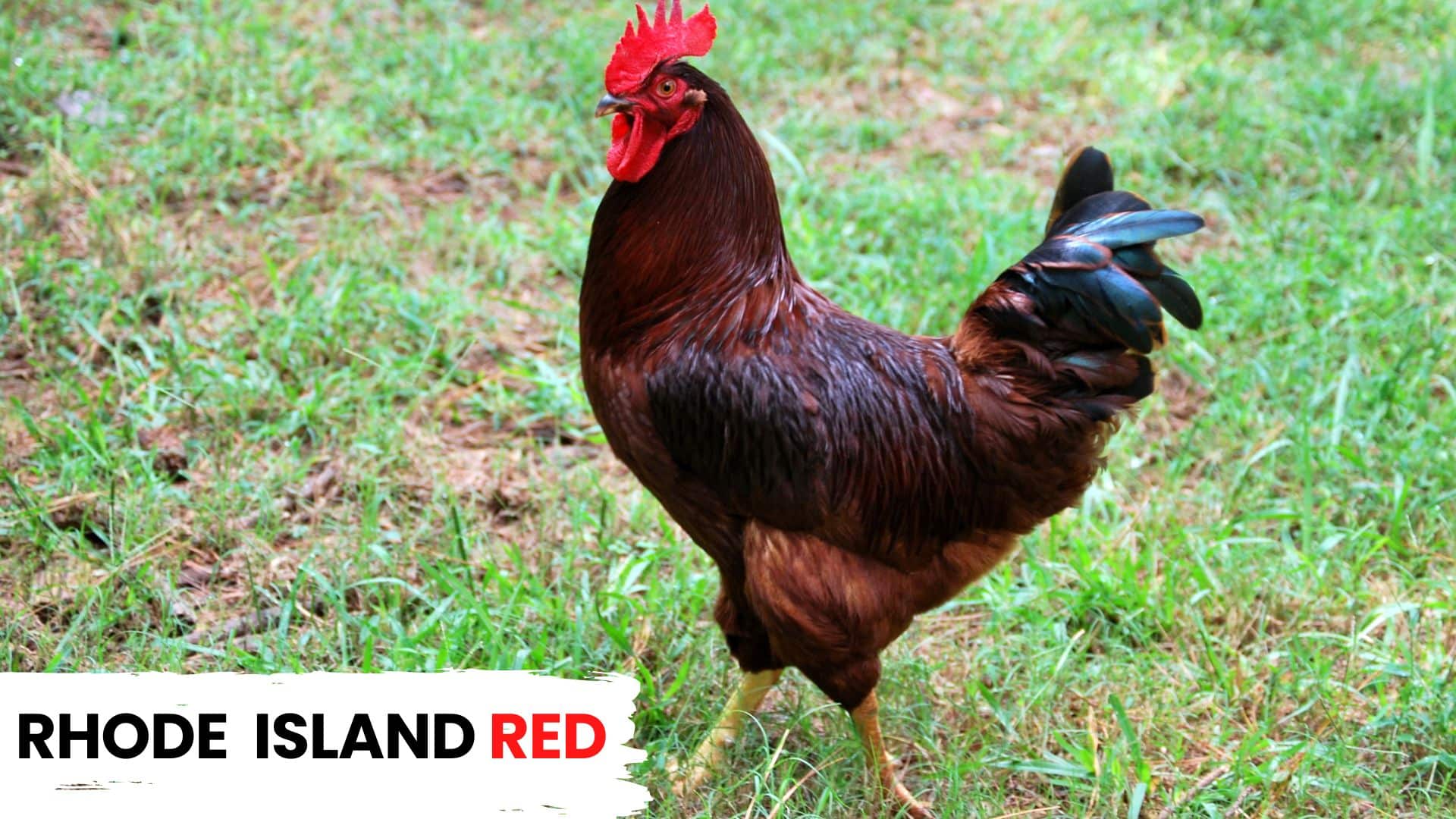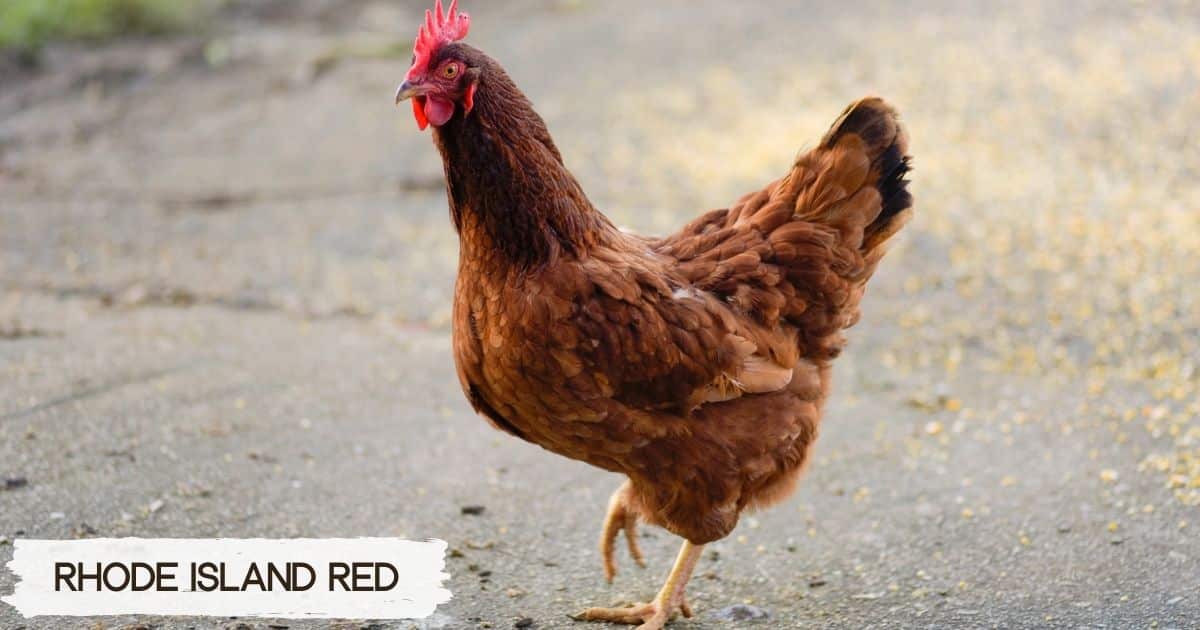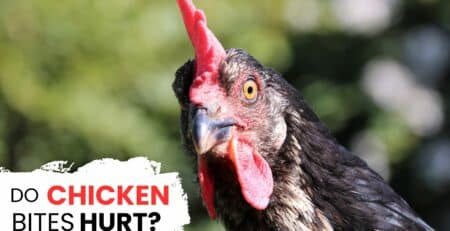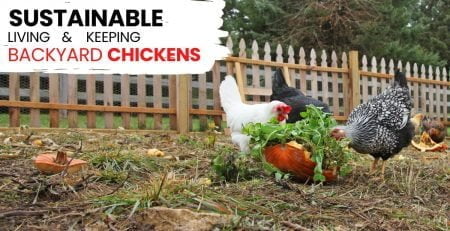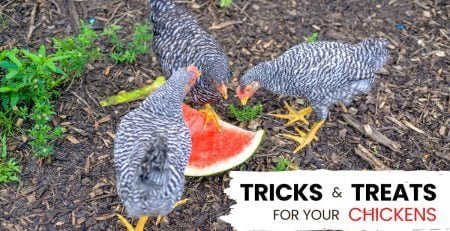Rhode Island Reds are a great breed of chickens for beginners to raise. They are large, hearty birds with beautiful red plumage and highlights of green in their tail. Rhode Island Reds are dual-purpose birds: efficient egg layers and providers of delicious meat. If you provide the proper space, food, water, shelter, and protection, you won’t have much to worry about when raising these beautiful birds in your backyard.
About Rhode Island Reds
Rhode Island Reds are among the most popular chicken breeds in the United States today. Referred to as one of the most successful chicken breeds, Rhode Island Reds were domesticated in the 1800s in Rhode Island for their prolific egg-laying abilities and delicious meat. They were so popular in Rhode Island that they became Rhode Island’s state bird in 1954.
Rhode Island Reds are large, heavy-bodied birds with beautiful chestnut-red feathers that are often offset by hints of black with highlights of shiny green in the tail. Chicks are fluffy balls of orange, red, and yellow and can easily be spotted amongst other breeds because of their beautiful colors. Rhode Island Reds are very productive egg layers, producing 200 to 300 eggs per hen a year.
Being large, heavy birds, they are also raised for their meat. Rhode Island Reds can be a little more feisty than other breeds of chickens, so keep this in mind if you have children or pets around. Rhode Island Reds are very vocal chickens, and the roosters are especially predator savvy. When raising Rhode Island Reds, there should be only one rooster for every ten hens to avoid fighting. The roosters are especially protective and will help keep your flock safe from predators. You’ll need to provide another form of protection at night, such as fencing or a Run-Chicken automatic coop door to help keep them safe.
Rhode Island Red’s Purpose
Rhode Island Reds were bred to perform a dual purpose: to provide both eggs and meat. They are most noted for their outstanding egg-laying abilities, though, with a hen laying 200 to 300 eggs per year. Rhode Island Reds take only five months to reach butcher size, and they are fairly large birds once they mature, weighing around six and a half pounds.
There are two types of Rhode Island Reds, production and heritage. Heritage Rhode Island Reds are quite rare, and they don’t produce as many eggs as production Rhode Island Reds. They are similar in size, though, and the meat is the same.
Egg Laying Habits
Rhode Island Reds were bred for their outstanding egg-laying abilities. Production varieties of Rhode Island Reds can lay about 300 eggs per year, and heritage varieties can lay around 200. That means that by adding Rhode Island Reds to your backyard flock, you’ll receive fresh eggs every day. Rhode Island Reds will also lay eggs in any weather, whether it’s the middle of a cold winter or in the high heat of summer. They lay large, beautiful brown eggs. Their eggs also get larger as the hen ages. Both production and heritage varieties lay high-quality eggs, and both are very productive egg layers. Production birds are also not very broody, making them a great choice for layer flocks.
Health Concerns
Rhode Island Reds are a hearty breed of chickens that aren’t predisposed to diseases or health issues. As with all chickens, mites, lice, and parasites are always a concern. Providing your chickens an area for dust bathing can keep away mites and lice. Be sure to always provide them with fresh, clean water to avoid parasites. Keep an eye on your chickens’ eating habits to ensure they are parasite-free or consider treating them for parasites regularly.
Behavior and Personality
If you’ve ever heard of Rhode Island Reds, then you may have heard a story of how feisty they can be. Though beautiful to look at, Rhode Island Red roosters can be quite aggressive if they sense a predator, or during mating season. Because they are predator- savvy and a little aggressive, roosters will provide protection and keep your flock safe. You only need one rooster for every ten hens, so it’s best to provide them with other forms of protection as well, such as a Run-Chicken automatic coop door, which will keep your chickens safe and secure at night.
Rhode Island Reds have been said to be a curious, vocal, hyper, and overall happy-go-lucky breed of chickens. Rhode Island Reds don’t like to be contained for long periods, and they can become aggressive if they are cooped up for too long. If they are provided with the ability to free-range or have enough space, they are usually pretty docile. They love to explore and investigate, and their nosiness only heightens their ability to catch all kinds of pests and bugs.
Are Rhode Island Reds Right for You?
When preparing to raise backyard chickens, you’ll learn that there are many breeds to choose from. How do you know which breed is best for you? First, you’ll want to be clear about the reasons why you’re raising backyard chickens: Ask yourself, are you raising chickens for eggs, meat, or companionship? Is it a combination of the two, or is it all three? Another thing to think about is the climate in the area where you’ll be raising your chickens. Do you live in a warm or cold climate? Some breeds of chickens do well in cooler environments, while others thrive in warmer weather. A good thing about Rhode Island Red chickens is that they do just as well in almost any temperature.
They are also amazing at laying eggs in almost any weather. Many types of chickens don’t lay as many eggs in the winter as they do in the spring, but Rhode Island Reds are an exception. They usually lay the same number of eggs, regardless of the weather. They are great meat birds, as well. They usually weigh around 6.5 pounds at maturity, so they provide a good amount of meat. Rhode Island Reds are unique because they are heavier birds that can tolerate cool temperatures, but they have a light coat of feathers which lets them thrive in warm environments as well. Being a very adaptable breed of chickens, they are a great choice for beginners.
Caring for Rhode Island Reds
Shelter
When raising backyard chickens of any breed, you’ll first need to provide them with proper shelter. They’ll need a coop to roost at night, for shelter from the weather, and to keep them safe from predators. A good rule of thumb is to provide your Rhode Island Reds with 4 square feet of space per chicken, with at least 8 inches of roosting space. You’ll need to provide your hens with nesting boxes that are large enough, at least one square foot, and you will need one nesting box for every 5 hens.
For extra protection, we recommend an automatic chicken coop door from Run-Chicken. Their “Rhode Island Red” automatic chicken coop door will not only add to the aesthetic of your chicken coop, but it will keep your flock protected from predators at night. Made of sturdy, weatherproof aluminum, predators won’t be able to come near your chickens at night. This automatic coop door has a light sensor that allows it to open at sunrise and close at sunset, ensuring your chickens are locked safely in their coop for the night.
Run, Tractor, Free-Range
When considering Rhode Island Reds for your backyard flock, it’s good to know that they don’t do well in confined spaces for long periods of time. They also require more space than other breeds if you can’t let them free-range. Rhode Island Reds, like all chickens, enjoy roaming free when possible. When they are cooped up for too long, they can get a little aggressive which may lead to fighting. They require a lot more space than most chickens, and if they don’t have enough space, it can also lead to fighting, molting, or the hens may stop laying eggs. If you don’t have enough space or you can’t allow your Rhode Island Reds to free-range, ensure that their run or tractor is large enough. Experts suggest 15 square feet of space per bird in their run or tractor. The more space you give them, the happier they’ll be.
When free ranging your Rhode Island Reds, it’s good to have a rooster on site. They are predator savvy and very vocal, so they’ll alert your flock when danger is near. The roosters are also very feisty and are known to be a little aggressive, so they are great at protecting your flock from danger. If you decide to free-range your chickens, remember that they still need a safe and sturdy coop to roost in at night and for shelter from bad weather. To keep them protected from predators while they sleep, a Rhode Island Red Automatic Chicken Coop Door is the best investment. Its light sensor allows it to close automatically at sunset, and it’s made from sturdy aluminum that will keep predators out.
Food and Water
Rhode Island Reds are heavy, hearty birds, but they don’t eat quite as much as other common chicken breeds. You should provide about ¼ pound of feed per hen every day, but they can supplement some of this if they are allowed to free-range. They’ll eat most bugs, worms, ticks, spiders, and even small mice. Rhode Island Reds don’t have any specific dietary needs, so a common chicken feed or layer mash purchased at your local feed store will be sufficient for them.
As with all chicken breeds, you should ensure your Rhode Island Reds have access to clean water throughout the day. They’ll usually drink about a pint of water a day but having access to fresh water throughout the day is very important to raise happy, healthy chickens.
Final words
Rhode Island Reds are not only one of the most beautiful breeds of chickens in the U.S., but they are among the most common. With beautifully shiny, chestnut-red feathers with hints of black and shocking highlights of green in their tails, these birds are a great addition to your backyard flock. Whether you’re just a beginner or you are a novice at raising chickens, you’re sure to love these high-spirited egg layers.

